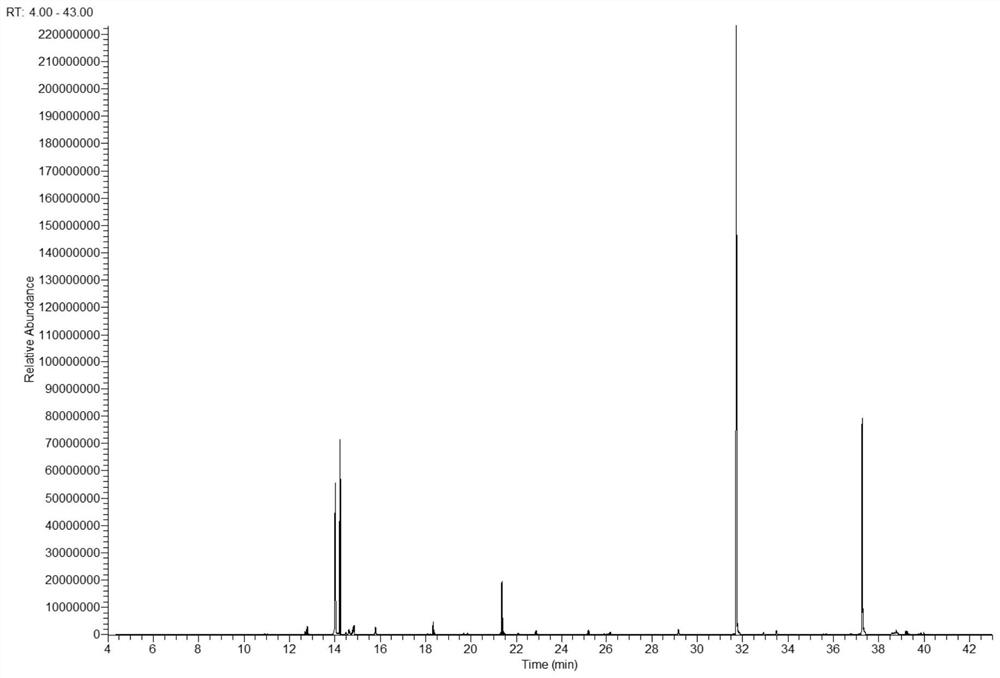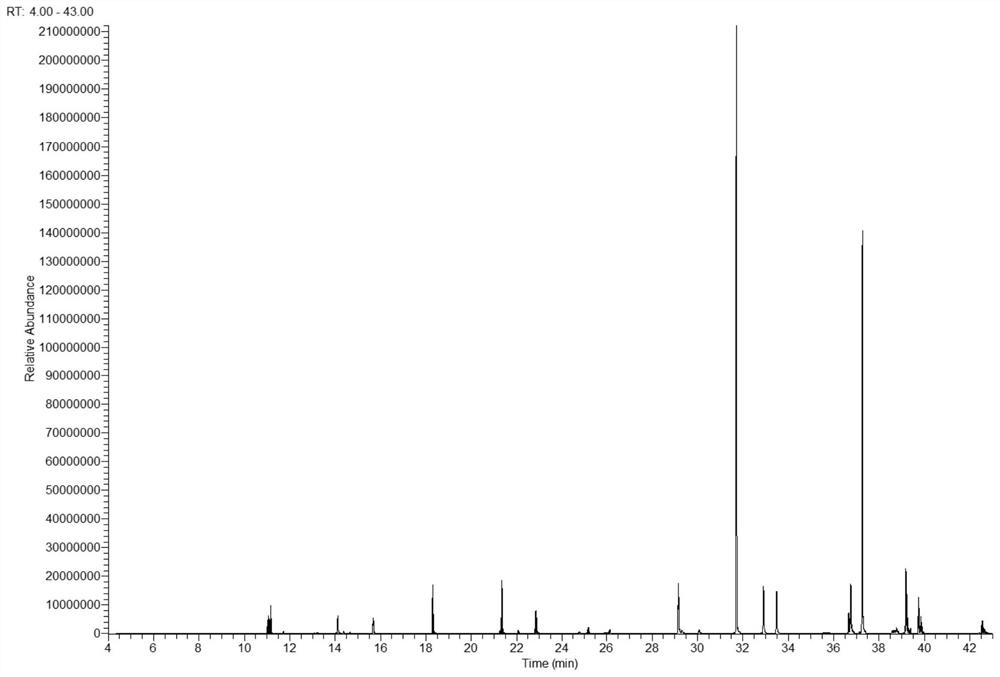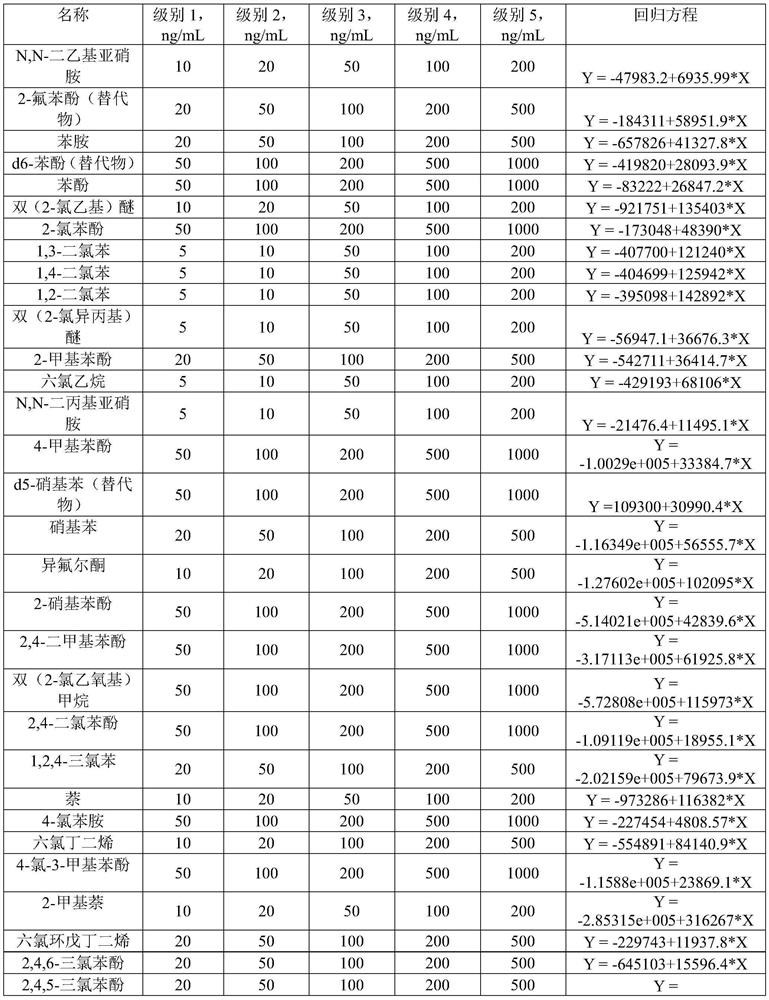Method for determining semi-volatile organic compounds in soil based on temperature programmed sampling-gas chromatography-mass spectrometry
A semi-volatile, temperature-programmed technology, applied in the detection field, can solve the problems of single quadrupole mass spectrometer with limited anti-interference ability, large difference in physical and chemical properties, and reduced work efficiency, so as to improve anti-matrix interference ability, high degree of automation, The effect of improving compatibility
- Summary
- Abstract
- Description
- Claims
- Application Information
AI Technical Summary
Problems solved by technology
Method used
Image
Examples
Embodiment 1
[0028] 1. Preparation of standard working solution
[0029] Use 2000mg / L mixed standard solution of 64 semi-volatile organic compounds and 2000mg / L mixed standard solution of 6 substitutes, prepare a high-concentration mixed standard solution with chromatographically pure acetone as an intermediate solution, and then dilute it with acetone to form a 1-5 level standard Working solution, the working solution concentration range is shown in Table 1.
[0030] The gas chromatographic conditions: separate with DB-5MS UI quartz capillary column (30m*0.25mm*0.25μm), carrier gas is helium, splitless injection, flow rate 1.0mL / min, initial temperature 40°C, keep for 5min , raised to 110°C at 8°C / min and kept for 2 minutes, raised to 150°C at 10°C / min and kept for 5 minutes, raised to 300°C at 10°C / min and kept for 5 minutes.
[0031] Detection of the standard solution and drawing of the standard curve: Accurately pipette 1uL of the prepared 1-5 grade standard working solution above and...
Embodiment 2
[0054] Weigh 20g of natural air-dried soil sample into a conical flask, the exact value is 0.0001mg, add 5g of diatomaceous earth and mix evenly, transfer to a fast solvent extraction pool, extract with dichloromethane: acetone (1:1), the extraction condition is temperature 100°C, pressure 1500psi, let stand for 8min, wash 60% of the volume, and circulate twice. The extract is concentrated to about 5mL by rotary evaporation, and transferred to a 10mL volumetric flask. The 4mL mixed solution is washed twice in the flask. 10 mL was analyzed by gas chromatography tandem mass spectrometer.
[0055] Table 4. Content of semi-volatile organic compounds
[0056]
[0057]
[0058] Calculation of phenol results: phenol equation Y=-83222+26847.2*X, the peak area is 1206786, the phenol content is 48.05ng / mL calculated from the curve, and the sample weight is 20g, so the test result=C*V / m / 1000=48.05 *10 / 20 / 1000 = 0.024 mg / kg. Among them: C is the concentration of each compound calc...
Embodiment 3
[0060] Weigh 20g of natural air-dried soil sample in a conical flask, accurate to 0.0001mg, add 5g of diatomaceous earth and mix evenly, transfer to a fast solvent extraction pool, extract with dichloromethane: acetone (1:1), the extraction condition is temperature 100°C, pressure 1500psi, let stand for 8min, wash 60% of the volume, and circulate twice. The extract is concentrated to about 5mL by rotary evaporation, and transferred to a 10mL volumetric flask. The 4mL mixed solution is washed twice in the flask. 10 mL was analyzed by gas chromatography tandem mass spectrometer.
[0061] Table 5. Content of semi-volatile organic compounds
[0062]
[0063]
PUM
 Login to View More
Login to View More Abstract
Description
Claims
Application Information
 Login to View More
Login to View More - Generate Ideas
- Intellectual Property
- Life Sciences
- Materials
- Tech Scout
- Unparalleled Data Quality
- Higher Quality Content
- 60% Fewer Hallucinations
Browse by: Latest US Patents, China's latest patents, Technical Efficacy Thesaurus, Application Domain, Technology Topic, Popular Technical Reports.
© 2025 PatSnap. All rights reserved.Legal|Privacy policy|Modern Slavery Act Transparency Statement|Sitemap|About US| Contact US: help@patsnap.com



